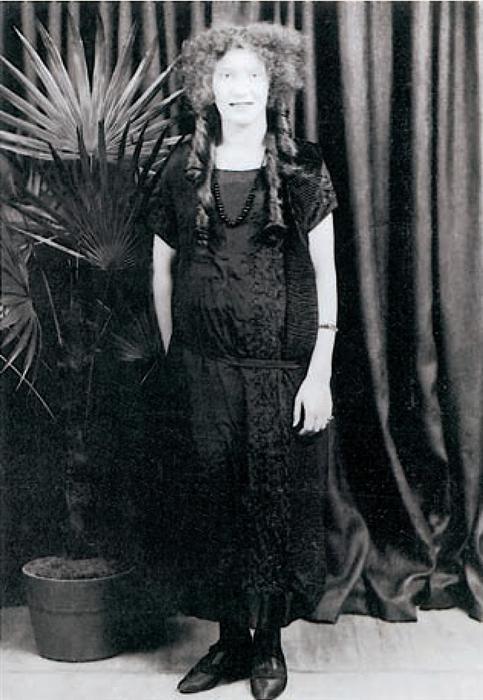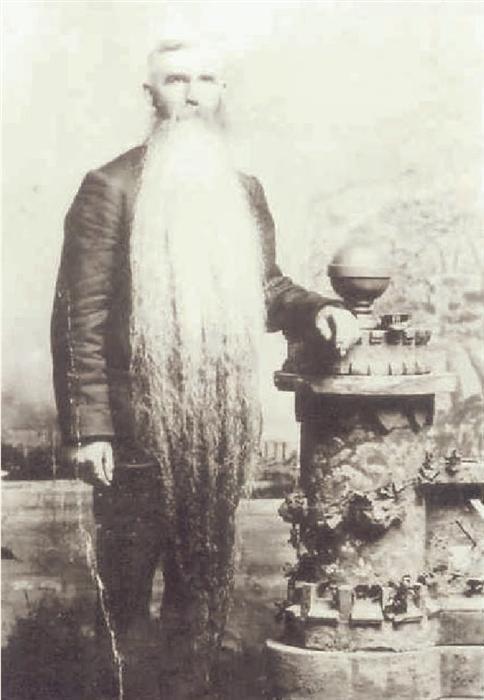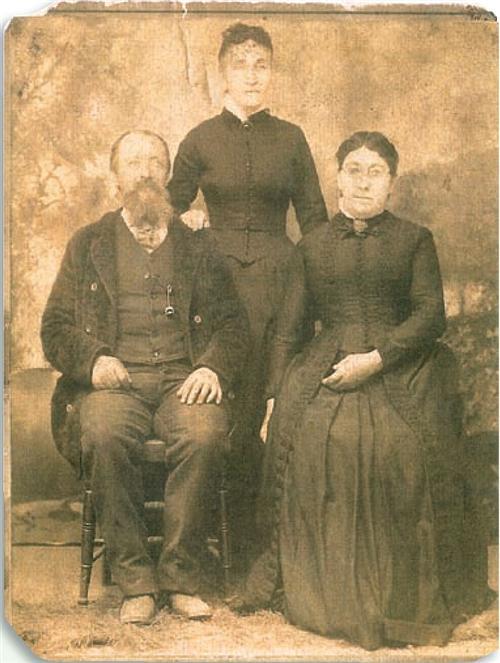Sign up for the Family Tree Newsletter Plus, you’ll receive our 10 Essential Genealogy Research Forms PDF as a special thank you!
Get Your Free Genealogy Forms
"*" indicates required fields
All in the family
August winners: hair we go again
We never knew the potential of the human follicle until we asked for photos of your curiously coifed forebears. Readers who sent these hair-raising (and -frizzing and -growing) entries won 8×8-inch album project kits from Chatterbox <www.chatterboxinc.com>.




My great-grandfather Jonathan Gray was a sturdy man who outlived two wives and six of his 11 children, survived several tours with Indiana Civil War units, built a successful business and volunteered with the police and fire departments.
As a bricklayer, he reputedly laid the first pressed brick in Indianapolis. His trade required strong hands and fingers, which he possessed — in fact, he had six fingers on each hand. They apparently served him well, as he displayed them prominently in every portrait. He’d pose with his hands splayed out on his knees, digits separated like a many-bladed fan.
Jonathan Gray’s happy acceptance of his extra fingers jars sensibilities in our era of Botox and cosmetic surgery. Since his time, parents in my family have counted infants’ fingers and toes as soon they’re born; children with extra digits (and there have been a few) have them surgically removed. But every time I look at photos of Grandpa Gray, I wonder at our modern desire for physical perfection. His hands helped build a city and a family. Jonathan was pleased with the usefulness of his 12 fingers. He loved those hands, and so do I.
Got News for You …
My great-great-uncle Bennett Hopper left Jasper County, Ill., for California. Grandmother said he got into a dispute with the family and told them to just send a postcard if anyone died. That’s all I knew about the mysterious Uncle Ben until recently.
While researching the Hopper family online, I found my great-grandparents in the Champaign County (Ill.) Historical and Genealogical Index <64.107.115.148/ccha/cchadb.htm>, so I ordered a copy of the record. I received it along with a note from librarian Rosemary Raeske.
She wrote, “Sometimes here in the archives we talk about the ‘spirits,’” and explained that the same day she handled my request, she also was researching a newspaper article about an Abraham Lincoln historical marker. She put a microfilm roll of the 1921 Urbana Courier on the film reader and started scrolling pretty fast, but a small article somehow caught her eye. She included it in my packet. The article said Mrs. Addie Hopper sued Bennett Hopper for divorce, charging infidelity and desertion — her husband had run away with another woman. Mrs. Hopper alleged Bennett Hopper and the woman lived together in Stephenson County, Ill., for several years, then “left together for parts unknown.” That would certainly explain his dispute with rest of the Hopper family.
A Holler Victory
Our first foray into genealogy resulted in a trip to southwest Missouri for my two siblings and me. On a torrid August day we found our grandparents’ and great-grandparents’ graves at “Flea Holler,” otherwise known as Bethlehem Cemetery.
After that, we were off to the MaysGillespie cemetery in search of Rebecca Manes. My sister, Susie, and I stayed behind while our brother, Mark, bravely threaded his way around abandoned washing machines and lollygagging dogs, then stepped onto a sagging porch for permission to visit the graveyard. We were told to cross the field and go through the “holler” to a stand of trees bordered by haystacks. How hard could that be?
We spent a sweaty hour tromping up hills, through creek beds and around haystacks. Ready to give up, one of us (there’s debate as to whom) spotted a headstone among weeds on the other side of a barbed-wire fence (through which Mark had earlier “used the facilities”). We climbed through — Mark with his weed-trimmer, Susie with her American flags and flowers, me with my camera — and wandered through thigh-high weeds in stifling heat. It was miserable, but magical.
Finally, we found Rebecca’s broken stone, the inscription barely legible: Rebeckey Evans Manes, 22 April 1813-21
Aug 1864, w/o Seth. Mark laid down the weed-eater and we gazed in awe. Here lay the woman who’d traveled from Indiana to Missouri with her young husband.
Our enthusiasm renewed, we searched for Seth’s stone, pacing the grounds, moving sticks, turning over rocks. Just when we were ready to go home, Mark picked up the weed-trimmer. We started laughing — it had been resting on Seth’s stone the whole time.
ADVERTISEMENT




